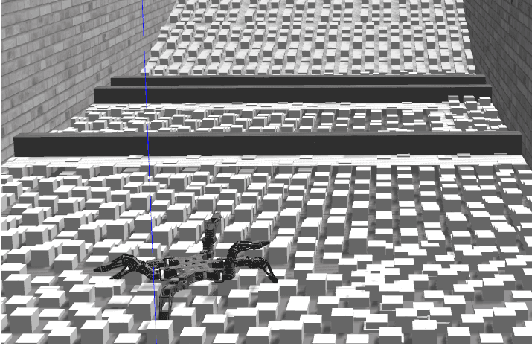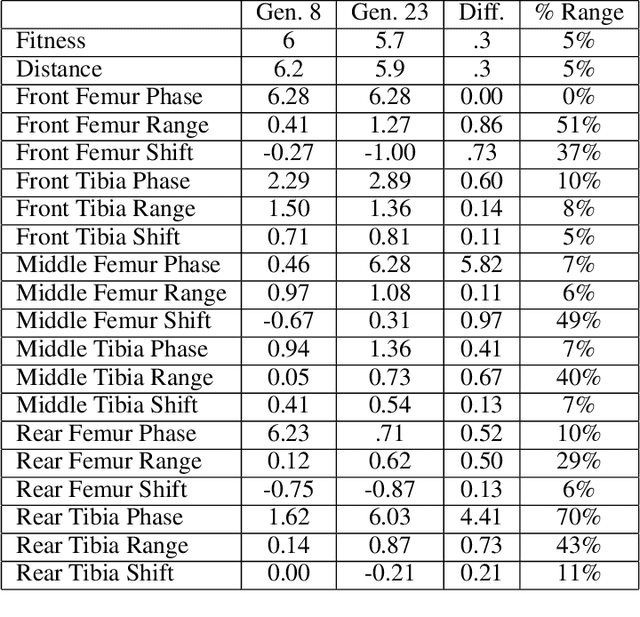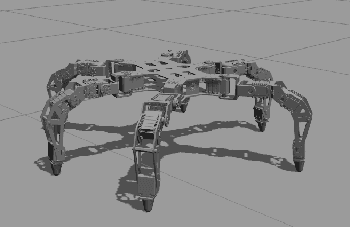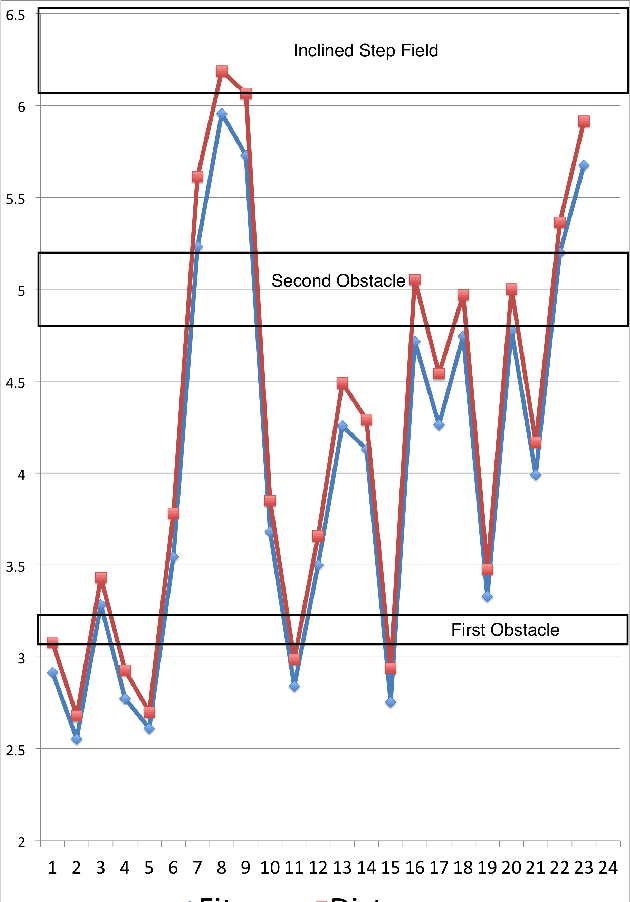Leveraging Evolutionary Algorithms for Feasible Hexapod Locomotion Across Uneven Terrain
Paper and Code
Mar 29, 2022



Optimizing gait stability for legged robots is a difficult problem. Even on level surfaces, effectively traversing across different textures (e.g., carpet) rests on dynamically tuning parameters in multidimensional space. Inspired by biology, evolutionary algorithms (EA) remain an attractive solution for feasibly implementing robotic locomotion with both energetic economy and rapid parameter convergence. Here, we leveraged this class of algorithms to evolve a stable hexapod gait controller capable of traversing uneven terrain and obstacles. Gait parameters were evolved in a rigid body dynamics simulation on an 8 x 3 meter obstacle course comprised of random step field, linear obstacles and inclined surfaces. Using a fitness function that jointly optimized locomotion velocity and stability, we found that multiple successful gait parameter evolutions yielded specialized functionality for each leg. Specific gait parameters were identified as critical to developing a rough terrain gait.
 Add to Chrome
Add to Chrome Add to Firefox
Add to Firefox Add to Edge
Add to Edge